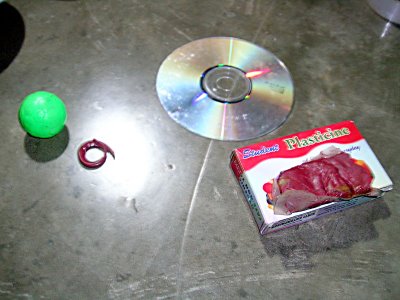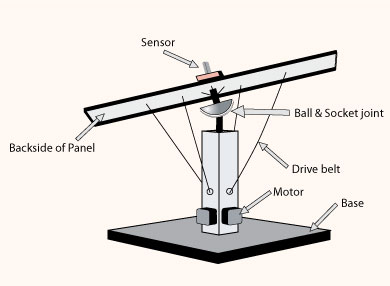Ping-Pong CD Concentrator is an idea that flashed into my mind when I saw the shiny side of a pile of useless CDs & DVDs lying on my desktop. The ping-pong element comes from a common plastic ping pong ball thats used to play table tennis. I was a table tennis player in school.
So, imagine a CD placed on a ping pong ball with shiny side up. Ball fits into the hole in centre of CD and if you fix the ball there, what you get is a kind of rotating mirror which can rotate 2 sides either right-left or front-back. Lets visualise it;

This is what it should look like. Attach the ball to the CD using adhesive.
This rotating type of mirror-like arrangement is the precursor to our Solar Concentrator. Quite intuitively, you can see that this CD can direct light falling on it to any side wherever it rotates. This is the basic concept that is used in Heliostats (Large Sun Tracking mirrors).
Now suppose you collect some waste CDs lying around and buy an equal number of ping pong balls (very cheap) and then build individual units like described above. Arrange them on the floor and fix them there using plasticine or clay (kids play with) in such a way that all of them point toward a common centre. The image below will make things clear;


I made a demo project as you can see on the right. All the individual units are concentrating sunlight on a circular point on a wall (not in picture).
This is a nifty little idea to concentrate sunlight easily. Equate this with what is shown below;
it is a power tower with hundreds of heliostats concentrating sunlight on the top of a tower.

Like this idea? Tell us! Your Suggestions invited. More updates to this will continue.
Start collecting waste CDs now!
C ya



